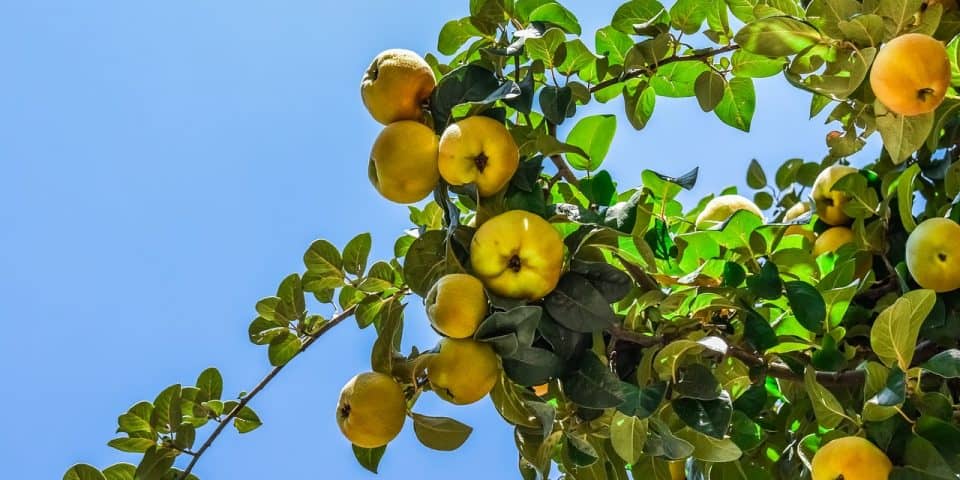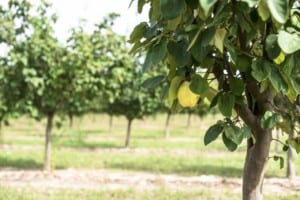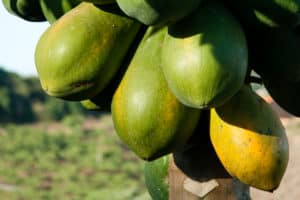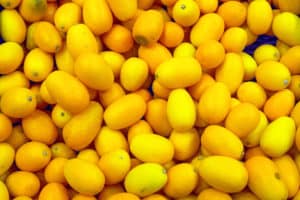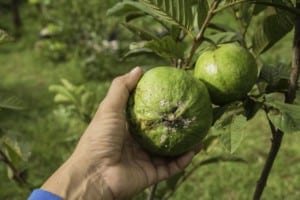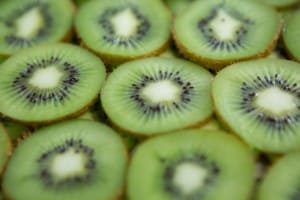Peaches have been around since the 1500s and are the second most popular fruit sold in the United States. Growing peach trees is something many people enjoy, and it helps that these are trees that look great, smell great, and are considerably easy to grow. Today I’ve listed 10 popular types of peach trees you can grow in your yard.
Contents
Contrary to what many people believe, there are hundreds of peach tree types available today. When you think of peaches, you likely think of certain varieties, but the fact is that there are over 200 cultivars of peaches to choose from.
Peaches can be a variety of colors, including yellow and white, as well as different shapes and sizes. In short, you won’t always recognize a peach as a peach, especially since the cultivars can vary quite a bit. But one thing that most of them have in common is their taste, which is nearly always very yummy.
Juicy and nutritious, peaches are popular for good reason. They are easy to grow even if you’re growing them outside on your own property. They can easily decorate your landscape, and of course, there’s nothing quite like picking a fresh peach off the tree and eating it.
Related: When are peaches in season?
Below are some of the most commonly grown peaches in the United States and elsewhere.
1. Yellow Peach Tree
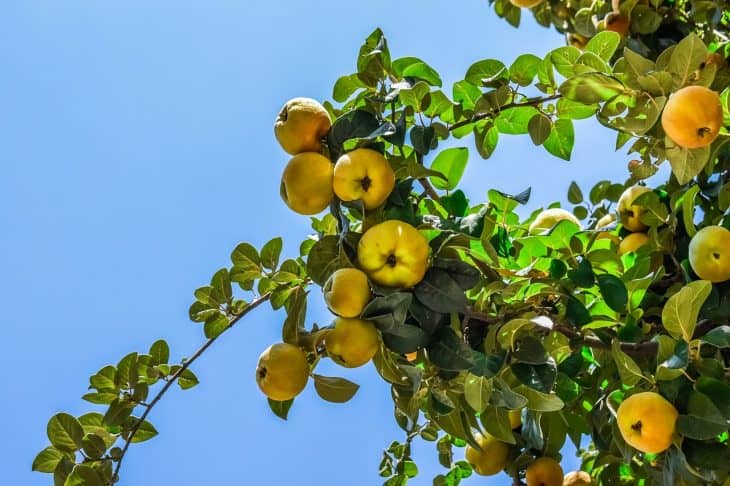
When it comes to peach trees found in the United States, most of them are the yellow peach variety. The color of the flesh can range from a pale yellow to a yellow-orange color or even a shade of yellow streaked with red. Many yellow peaches turn red the closer you get to the pit.
Yellow peach varieties include Autumn Gold, O’Henry, and Suncrest, and each of these provides its own unique taste and beauty. They are usually more acidic and tangy than the white peaches, and they have a very pleasant aroma. If yellow peaches feel heavy for their size, this usually means they are ripe.
Yellow peaches also need to be yellow in the stem cavity to be ripe, and you should be able to experience some “give” when you hold them in the palm of your hand.
2. White Peach Tree
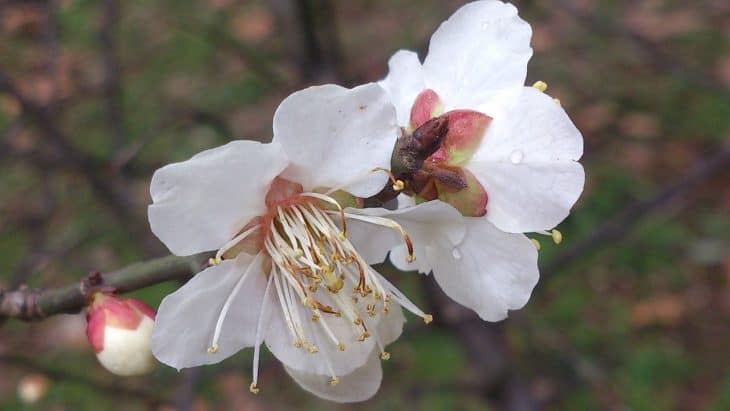
White peaches look very similar to yellow peaches until you cut them open, where you’ll find flesh that is a nice white color. They are less acidic and sweeter than their yellow counterparts, and they also have a smoother and nicer texture.
While the United States favors yellow peaches, white peaches are usually favored in other areas, especially Asia, where their skins can be yellow, red, or even blush-colored. Common white peach varieties include the Belle of Georgia, Strawberry Free, and Babcock.
If a white peach is ripe and ready to eat, it will have a stem cavity that is light yellow or white. If it is green, this means the peach is not yet ready to enjoy.
3. Freestone Peach Tree
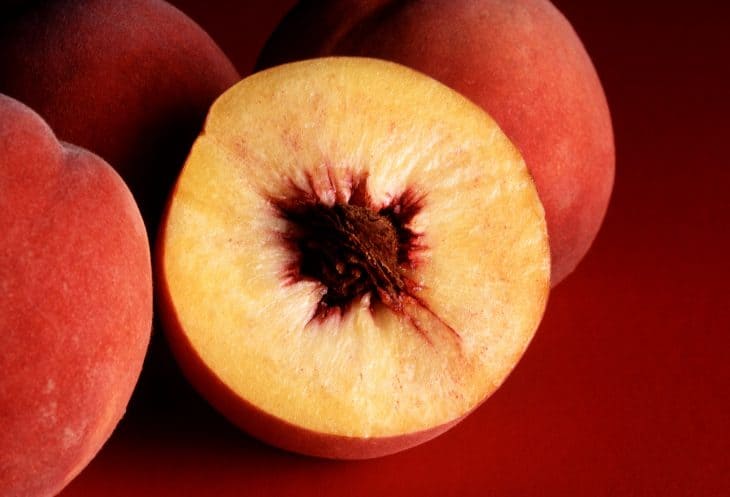
With freestone peaches, the flesh doesn’t stick to the pit and, therefore, many people prefer them when they’re eating fresh peaches. They are quite large and less juicy than other types of peaches, including the clingstone variety, and they are usually available sometime between May and October.
Since freestone peaches separate so easily from the pit, these are the perfect peach tree types if you’re wanting to make pies or preserves. The fact that the flesh isn’t attached to the pit makes them super-easy to work with, and this makes them preferable when making dishes that include peaches.
Freestone peaches make up the majority of peaches sold to the public, and like other types of peaches, there are a number of freestone varieties.
4. Clingstone Peach Tree
When a peach’s flesh clings to its pit, it is known as a clingstone peach. They are a bit juicier, softer, and sweeter than freestone peaches and they are used for baking, making preserves, and for canning. If you purchase canned peaches that are sold commercially, they are always clingstone peaches.
While grocery stores usually carry freestone peaches, many farmers’ markets will sell the clingstone variety, and you can find these peaches some time during the summer months, depending on where you live. It is also possible to find a hybrid of freestone and clingstone peaches, which are normally called semi-freestones.
5. Donut Peach Tree
These peaches get their name because their appearance is very similar to donuts, being fairly flat and round in size and shape. Donut peaches are easy to eat right out of your hand, and they are low-acidic fruits as well. Found mostly in farmers’ markets and specialty stores, donut peaches have white flesh.
These peaches are usually available in July and August and are also called Saturn peaches. This is an heirloom variety that is beginning to grow in both recognition and popularity. Their yellow skin has a red tint to it, and the peach itself clings to the pit.
Donut peaches have a great flavor that is mild and tastes a lot like sweet almonds. They are the result of a genetic mutation, but are certainly finding their own way into the peach world.
6. Nectarine Tree
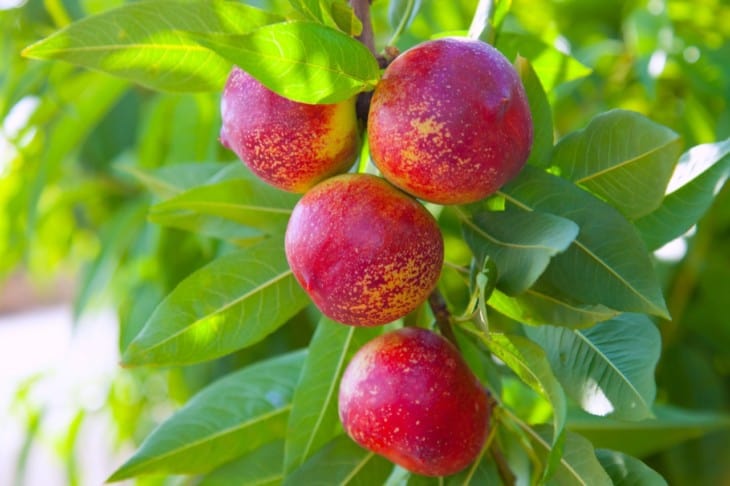
Nectarines are a variety of peach that are so close to peaches botanically that you can often find them on the branches of a peach tree. Unlike regular peaches, nectarines have no fuzzy skin and, therefore, you can even leave that skin on when you’re baking this fruit in a pie or other dish.
Nectarines tend to have a lighter taste than standard peaches as well as a better overall flavor. Their smooth skin distinguishes them from most types of peaches, and it is usually a dark-red and yellow color. They are great for eating right out of your hand.
7. Dwarf Peach Tree
Dwarf or miniature peach trees are often a favorite for home growers, and the tallest the trees get is roughly six feet. Compared to the standard peach tree, dwarf peach trees produce far more fruit buds, making this one of the many peach tree types that is hard to resist.
Easy to grow and perfect for gardeners who don’t have a lot of room in their garden, dwarf peach tree varieties include the El Dorado, Bonanza, and Honey Babe. Many dwarf peaches are bright orange in color, but there are other colors available depending on the variety.
If you don’t have much space, but you’re dying to grow your own peach tree, the dwarf or miniature peach tree is the one you want. Although some varieties get up to 10 feet in height, most of the trees remain well below that mark.
8. Redhaven Peach Tree
Redhaven peaches bloom heavily in mid-June and July, and if you own one of these trees, you’ll want to thin them out and prune them when they get to be the size of cherries. Otherwise, their growth will overpower your garden.
According to many sources, Redhaven peaches are some of the most popular types of peaches grown in the United States. They have red and yellow skin and hold both their flavor and their shape very well. If you’re looking for the perfect peach to use for canning, look no further because the Redhaven is it.
Redhaven peaches are a freestone variety and have flesh that is yellow in color, sweet, and firm. In addition to canning, you can use these peaches for freezing and to eat right out of your hand. They are also attached to very attractive trees that boast aromatic pink flowers in the spring.
9. Gleason Early Elberta Peach Tree
In the spring, the Gleason Early Elberta peach tree produces soft-pink flowers that are quite attractive, and they are one of the few peach tree types that you can pick while still slightly green and they’ll still taste terrific. This is a freestone type of peach that is very juicy and tasty.
The Gleason Early Elberta peach also appears several weeks before its parent tree, the Elberta, and it is a deciduous tree that is best grown in zones 5 to 9. It does best when grown in the full sun, although it does need to be watered regularly, especially when it’s hot outside.
This peach also has a beautiful orange-yellow color that is certain to make it stand out among the other types of peaches, enabling it to be both tasty and gorgeous.
10. Santa Barbara Peach Tree
Santa Barbara peach trees grow best in zones 7 to 10 and have a beautiful orange-yellow color and a delicious taste. The trees require only around 300 hours of winter chilling to produce a good crop of peaches, and they begin to ripen in mid-summer.
This is also a deciduous tree that needs full sun and regular watering to grow properly, and the fruit itself is large, juicy, and very sweet. In fact, between its intense flavor and its fine texture, this is one peach you won’t soon forget, making it the perfect option for those who love peaches.
Santa Barbara peaches melt in your mouth and are great for eating fresh off the tree, although they can be used in other ways as well. The tree even produces beautiful pink flowers in the springtime, making this a gorgeous tree to have in your garden.

